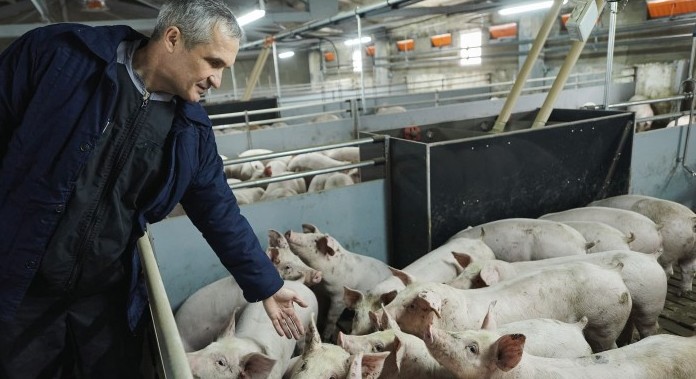How the Russia-Ukraine conflict is affecting the pig sectors and wider agricultural industries in both countries
The war is likely to have a massive impact on the pig industry in Ukraine – but the Russian pig sector is also braced for a period of unprecedented uncertainty.
Ukraine is fighting
Like the entire country, it is clear that Ukraine’s pig industry will suffer from the Russian invasion. Several pig and poultry farms have been destroyed since the beginning of the fighting, but the full scale of the damage will only be clear once it is over. However, it can be safely assumed that the impact is going to be huge.
As many as five million Ukrainians are expected to flee from the country. Many farmers have had to flea from the regions where fighting is taking place or those occupied by Russian troops, although the Ukrainian government stated that more than 50% of businesses in the country have continued operating. In addition, quite a few farmers reportedly joined the militia to fight the Russian troops.
The production problems in Ukraine could spark a food supply crisis in the countries that traditionally rely on Ukraine grain. Food and agricultural experts have warned of increasing food insecurity in poorer countries, many of which are already suffering from high hunger levels because of the pandemic.
The Middle East and North Africa have already started looking for alternative grain suppliers, while this year’s sowing campaign in Ukraine could end up being a complete disaster.
Russian alarm
On March 11, Russian deputy Agricultural Minister Ivan Lebedev called to boost state aid for agriculture by a 242 billion RUB (£1.5 billion), mostly to subsidize interest on loans, which have become unaffordable for pig farmers.
The Russian Central Bank has doubled interest rates after sanctions sent ruble plunging. At the time of writing, the main rate stands at a record 20%.
In the wake of oversupply and falling prices on the domestic market, the average profitability in the Russian pig industry slumped from 22% in 2019 to 10% in 2020, and is likely to have fallen further since then as prices continue to fall.
The Russian Union of Pork Producers remains silent, but several Russian business unions are already alarmed over the upcoming crisis in the Russian livestock industry.
The Russian National Union of Turkey manufacturers submitted a letter to the government asking for urgent support amid concerns over imported hatching eggs and feed additives, as well as expensive bank loans. It said foreign suppliers now demand full pre-payment of orders, while others refuse to sell anything to Russia.
Since the Russian annexation of Crimea in 2014, the Russian government spared no effort in preparing for a stand-off with western countries. In addition, to large foreign currency reserves accumulated by the Central Bank, the authorities encouraged farmers to replace imports of the main sources of protein, including poultry, pig, and milk.
At first glance, the authorities seem to succeed, as Russian self-sufficiency in pork now stands at roughly 104%. However, the sanctions are likely to expose the serious vulnerability of the Russian pig industry, which largely relies heavily on foreign technologies and raw materials.
The Russian consultancy Feedlot estimated that its dependence on foreign feed additives was close to 80%, while for some important items, such as vitamins and amino acids, it is 100% dependent on imports.
Isolation looks inevitable
Since the beginning of the Russian invasion of Ukraine, as many as 330 Western companies have publicly announced they are leaving the Russian market. Hundreds more have suspended imports to Russia, given that 70% of the Russian banking sector is now subject to sanctions, and most western banks refuse to process transfers even to banks that have not fallen under the financial restrictions.
Under the condition of anonymity, a Russian farmer said full isolation of the Russian pig industry, which ‘looks inevitable now’, would cause huge damage. He explained that the absence of imported feed additives is expected to impair the average gains, while meat quality and herd health conditions are matters of concern.
He added that the industry has been put in a situation of the ‘highest uncertainty’, but ‘assuming that the Western sanctions are introduced for a long time, the pig industry in Russia is readying for dramatic changes’.
Russia still largely relies on foreign genetics and equipment. The country’s demand for GGP boars is estimated at 9,500 head per year, GP stock at 1,500 head/year, and parent stock at 6,500 heads/year, according to Topigs Norsvin.
Equipment supplier Aco Funki Russia estimated that the share of foreign equipment at the Russian pig farms was close to 90%. Some companies have begun producing equipment locally over the past few years, but in small quantities, and primarily for small-scale pig farms.
Feeding and ventilation systems are not produced at all in Russia, and this is unlikely to change, an Aco Funki spokesperson said.




